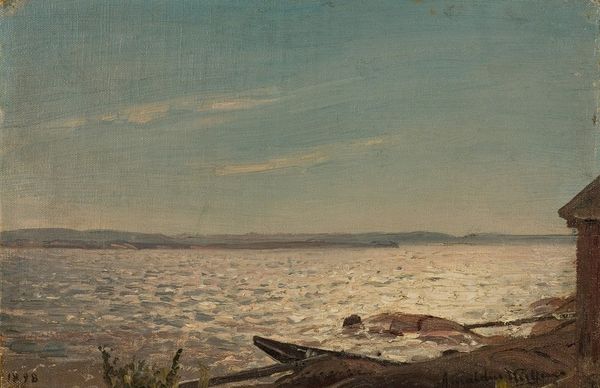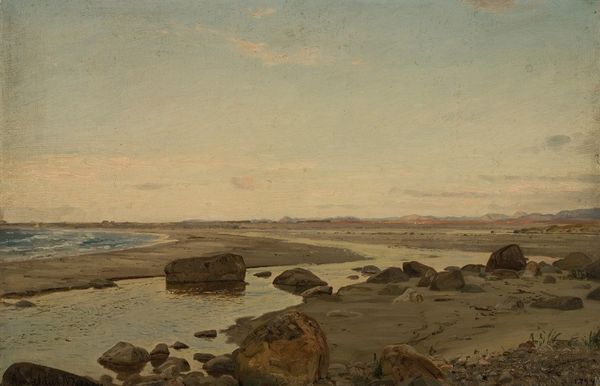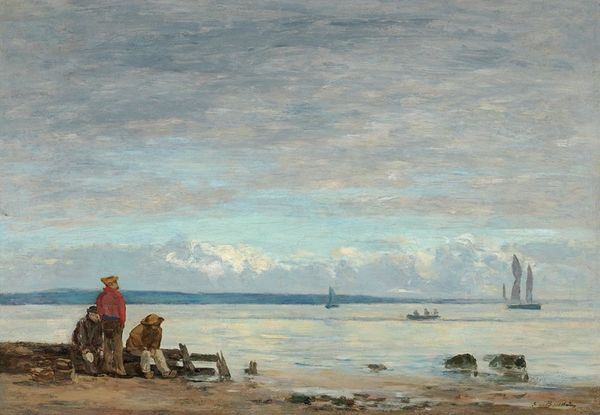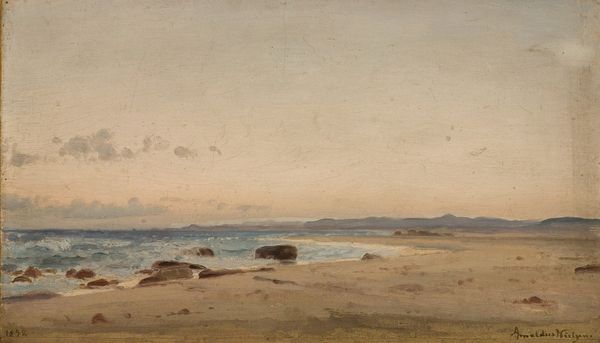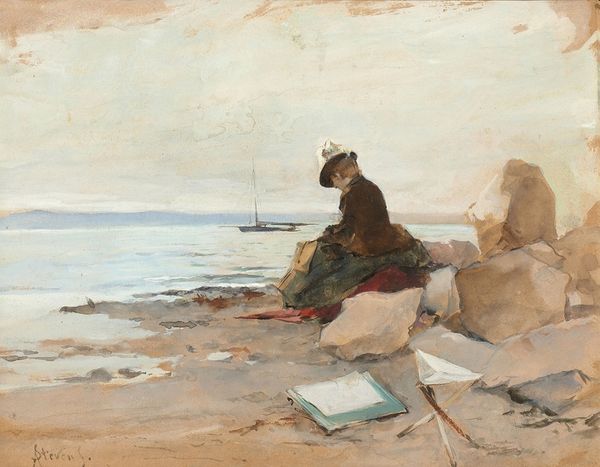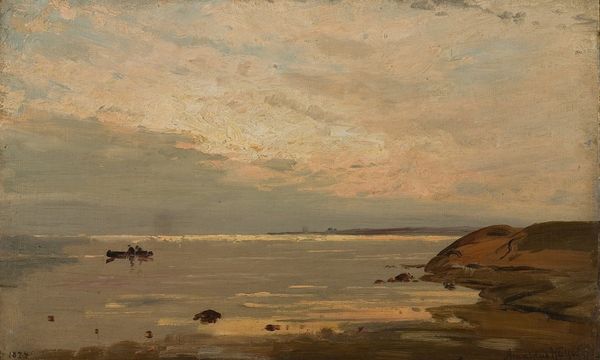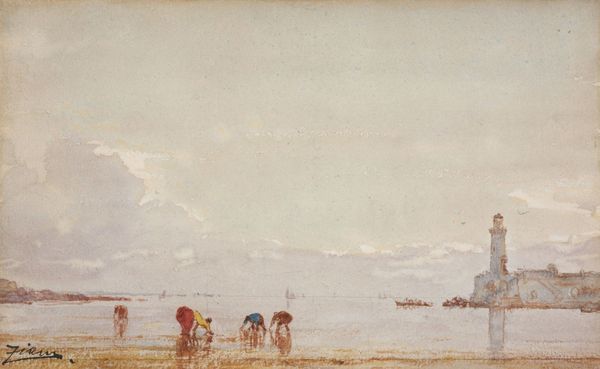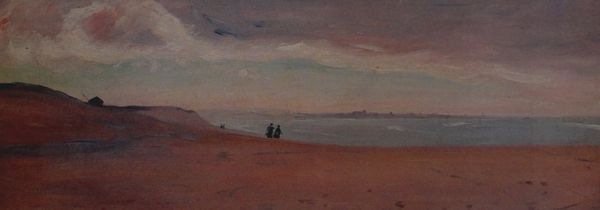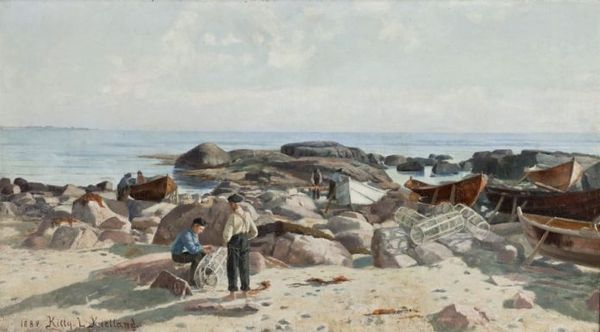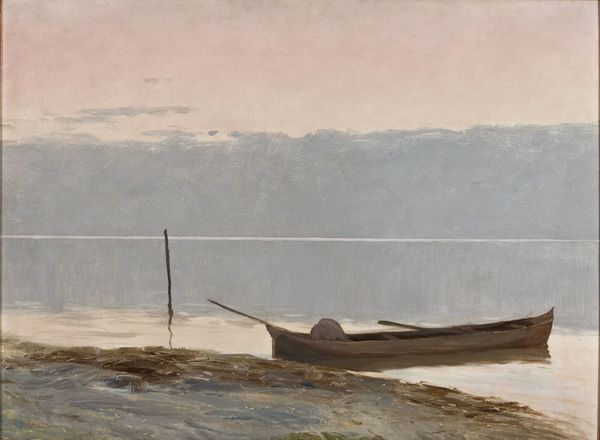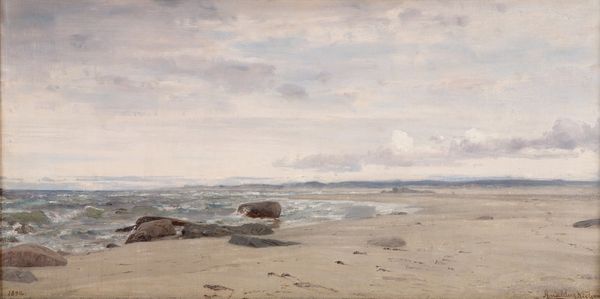
watercolor
#
water colours
#
impressionism
#
landscape
#
oil painting
#
watercolor
#
realism
Copyright: Public Domain: Artvee
Curator: Good morning. Today, we're looking at "Open Sea off Haikko, study for Boys Playing on the Shore" created by Albert Edelfelt in 1884. Edelfelt, a Finnish painter, captures a moment of tranquil observation in watercolor. Editor: It’s… unusually subdued, isn’t it? Almost monochromatic. The eye travels between those large, angular rocks, the vague reflection on the water, and the ghostly suggestion of the land on the horizon, yet there's so little contrast or saturation. The entire image feels as though it's rendered on the verge of vanishing. Curator: Indeed. While Edelfelt is known for his vibrant depictions of Finnish life and society, here, the restraint in palette draws attention to form and composition. It’s worth remembering that it's a study, an exercise, if you will, for a larger painting. The brushstrokes are quick and deliberate, laying the foundation for a more elaborate finished work. Editor: I’m intrigued by the strategic positioning of the rocks. Notice how they establish this visual rhythm, almost a deliberate arrangement from left to right. What are the semiotic elements at play? One could read into how the interplay between water and stone evokes certain philosophical arguments on impermanence and the persistence of the material world. Curator: It's interesting you pick up on that, since this was made at a pivotal point in Finnish art. The late 19th century witnessed the rise of landscape painting, capturing Finland’s national character and sense of identity under Russian rule. Haikko, a coastal region, offered endless possibilities for artists like Edelfelt to explore these themes of place and belonging in social life. The finished painting featured playful figures, transforming the somewhat brooding landscape into an intimate vignette of middle class leisure. Editor: Perhaps Edelfelt also suggests themes of control, or lack thereof. He guides the viewer across the surface via pictorial components like tonality and texture while ultimately conveying that any imposed meaning risks being engulfed by the work’s watery expanse. The effect is of both surface and depth. Curator: It’s tempting to interpret through a sociopolitical lens or, conversely, formal values, though I am reminded that even a seemingly understated painting such as this holds multiple layers for interpretation. Thank you for your insights. Editor: And thank you. Viewing this through its materiality as an early impression of its kind has been fascinating.
Comments
No comments
Be the first to comment and join the conversation on the ultimate creative platform.
